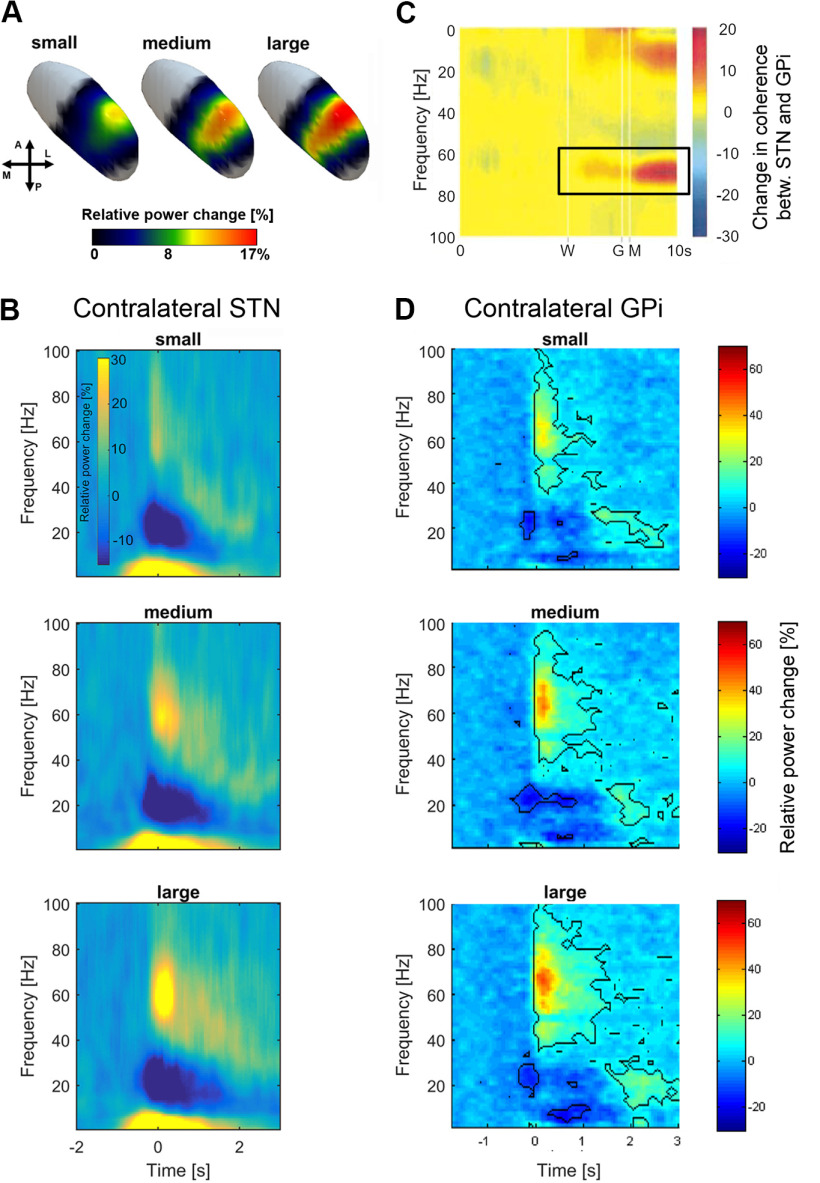Figure 2.
Stronger γ synchronization coincides with increased movement vigor. A, A larger proportion of cells engages in movement-related STN γ synchronization when movements are larger. The task required Parkinson’s patients to perform cued forearm pronation movements. The peak frequency of the movement-related γ increase is similar for small, medium and large movements in the STN (B) and in the GPi (D). A + B are adapted from Lofredi et al. (2018), and D is adapted from Brücke et al. (2012). In both studies the peak of γ synchronization seems to follow movement onset. Although not visible here, more subtle changes in synchronization may already occur earlier, similar to the increase in STN-GPi γ coherence as shown in C. C, An early increase in γ coherence (highlighted by the rectangle) was visible between simultaneously recorded STN and GPi LFP activity already after the warning signal (W), which preceded the go signal (G) and movement onset (M) by 2.5 s. This early increase was only apparent on dopaminergic medication in one patient. The sample size was small as simultaneous STN and GPi LFP recordings in humans are very rare. Note that the y-axis is vertically flipped compared with B + D. C is adapted from Cassidy et al. (2002) by permission of Oxford University Press.

